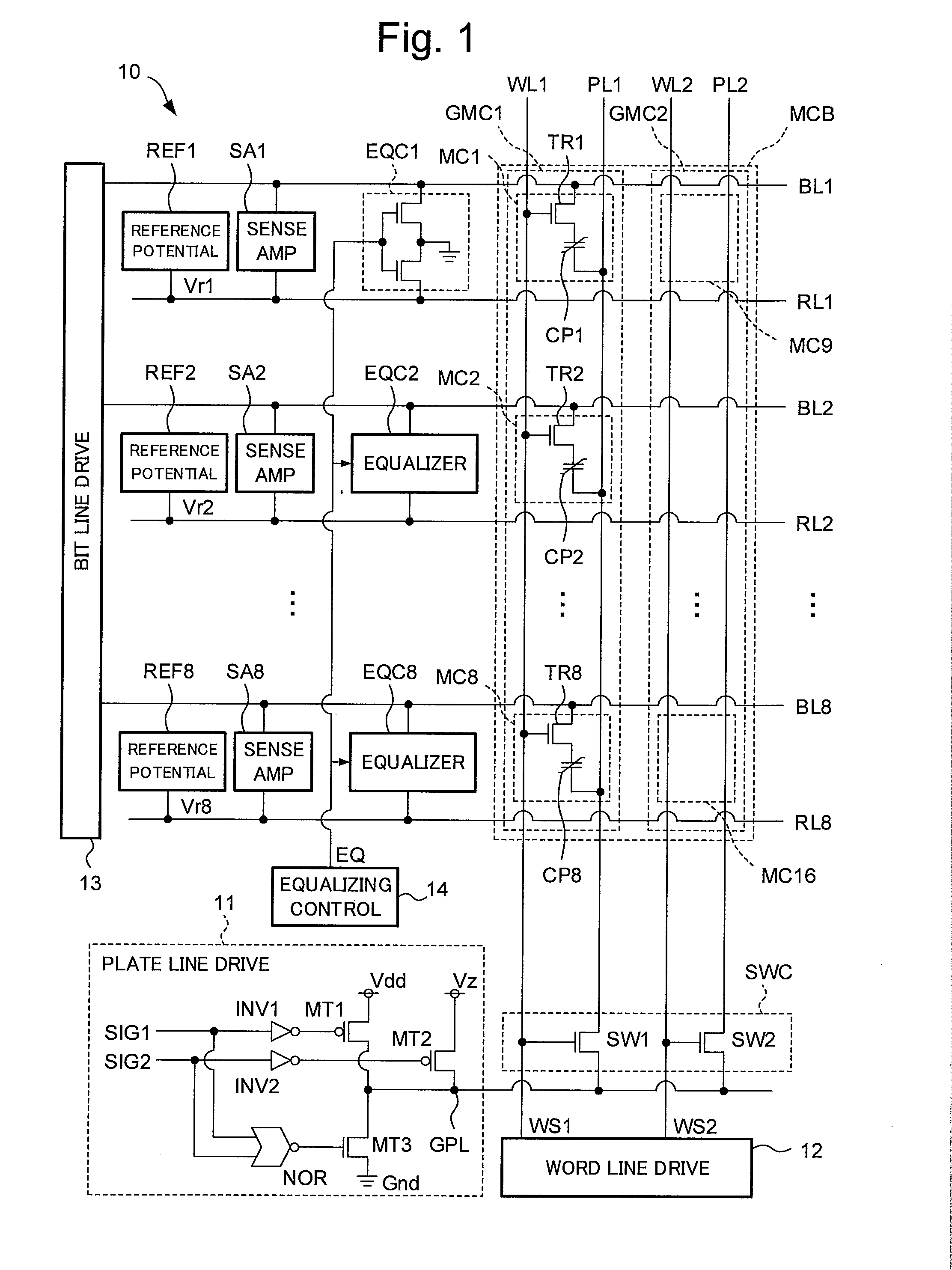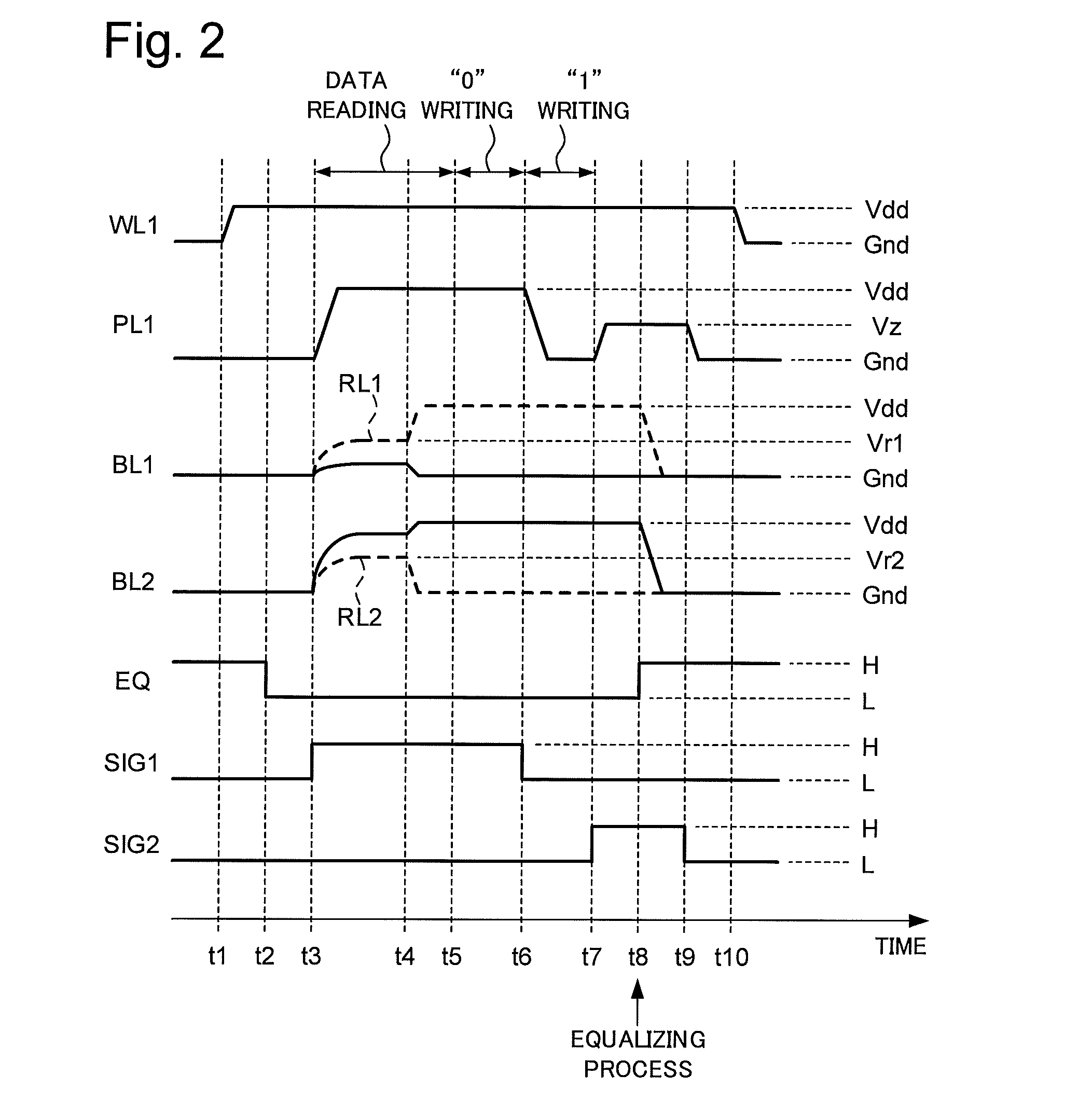Ferroelectric random access memory
a random access and magnetic technology, applied in the field of magnetic random access memory, can solve the problems of difficult suppression of the brief variation itself the variation in the potential so as to reduce the effect of the potential variation of the plate line, reduce power consumption, and good data retention characteristics
- Summary
- Abstract
- Description
- Claims
- Application Information
AI Technical Summary
Benefits of technology
Problems solved by technology
Method used
Image
Examples
first embodiment
[0025]FIG. 1 is a circuit diagram showing a configuration of a ferroelectric random access memory (FeRAM) 10 according to a first embodiment of the present invention. The FeRAM 10 has a memory cell block (hereinafter simply called cell block) MCB which is a memory cell matrix constituted by a plurality of memory cells having a 1T1C configuration. The plurality of memory cells are connected to j bit lines and k word lines, and arrayed in a matrix of j rows and k columns (j is an integer of 2 or more and k is an integer of 1 or more). The memory cell block MCB includes the plurality of memory cells each of which has one transistor (hereinafter called cell transistor) for cell selection and one ferroelectric capacitor (hereinafter simply called capacitor).
[0026]This embodiment represents the case of j=8 and k=2, namely, sixteen memory cells MC1 to MC16 are connected to eight bit lines BL1 to BL8 and two word lines WL1 and WL2. The cell block MCB has the sixteen memory cells MC1 to MC16...
second embodiment
[0086]FIG. 4A is the circuit diagram showing a configuration of a plate line drive circuit 31 in a FeRAM 30 according to a second embodiment. The FeRAM 30 is identical to the FeRAM 10, except for the configuration of the plate line drive circuit 31.
[0087]The plate line drive circuit 31 has a variable potential generation circuit 31A that generates one potential of a plurality of potentials having potential levels different from each other between the ground potential Gnd and the power source potential Vdd, as the noise absorption potential Vz. The plate line drive circuit 31 stops applying the noise absorption potential Vz to the one plate line (for example, plate line PL1) at the time of starting the equalizing process. The plate line drive circuit 31 puts the potential of the one plate line PL1 into the floating state by using a control signal (third control signal) SIG3, at the time of starting the equalizing process. To be more specific, in addition to the control signals SIG1 a...
PUM
 Login to View More
Login to View More Abstract
Description
Claims
Application Information
 Login to View More
Login to View More - R&D
- Intellectual Property
- Life Sciences
- Materials
- Tech Scout
- Unparalleled Data Quality
- Higher Quality Content
- 60% Fewer Hallucinations
Browse by: Latest US Patents, China's latest patents, Technical Efficacy Thesaurus, Application Domain, Technology Topic, Popular Technical Reports.
© 2025 PatSnap. All rights reserved.Legal|Privacy policy|Modern Slavery Act Transparency Statement|Sitemap|About US| Contact US: help@patsnap.com



